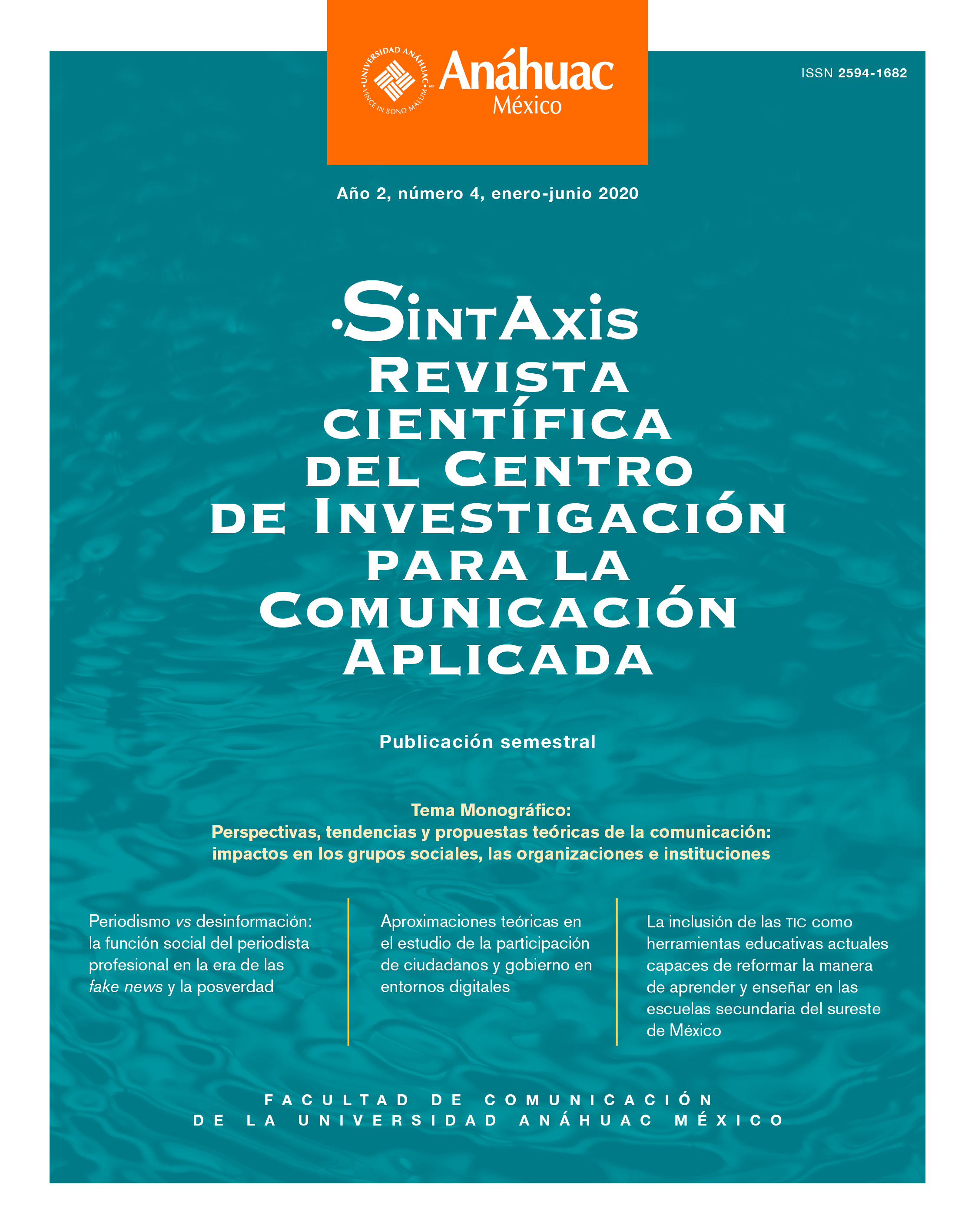Rethinking Memory Learning through Cinema. From Theorical Reflection to Analyzing the Film Interstellar (Christopher Nolan, 2014)
Main Article Content
Abstract
Cinema addresses issues that are significant for understanding various disciplines. This article first presents a brief review of academic studies that have examined this subject. Then, we analyze how a text, the film Interstellar (Christopher Nolan, 2014), carries an ideological and historical load. Memory is a key element of the configuration of contemporary societies and its learning, through cinema, by current generations can make a significant contribution to society. Theoretical proposals made by Iuri Lotman, Tzvetan Todorov, Terry Eagleton and Robert A. Rosenstone on culture, language, ideology, memory, and cinema shed light on this subject.
Downloads
PLUMX Metrics
Article Details
The author keeps the property rights with no restriction whatsoever and guarantees the magazine the right to be the first publication of the work. The author is free to deposit the published version in any other medium, such as an institutional archive or on his own website.
References
Arias Gómez, D. (2016). La memoria y la enseñanza de la violencia política desde estrategias audiovisuales. Revista Colombiana de Educación, (71), 253–278.
Beristáin, H. (2004). Diccionario de retórica y poética. México: Porrúa.
Bolas, T. (2009). Screen education, from film appreciation to media studies [La educación en la pantalla. De la apreciación cinematográfica a los estudios de medios]. Chicago: The University of Chicago Press.
Eagleton, T. (2003). Hacia una ciencia del texto. En N. Araújo y T. Delgado (Coords.). Textos de teorías y críticas literarias. Del formalismo a los estudios postcoloniales (pp. 559-565). México: UAM / Universidad de La Habana.
García Amilburu, M. (Coord.) (2010). Mil mundos dentro del aula. Cine y educación. Madrid: Universidad Nacional de Educación a Distancia.
Lotman, I. (1996). Semiosfera I. Semiótica de la cultura y del texto. (Trad. Desiderio Navarro). Valencia: Cátedra.
Lotman, I. (2000). El lugar del arte cinematográfico en el mecanismo de la cultura. Semiosfera III.Semiótica de las artes y de la cultura. (Trad. Desiderio Navarro). Valencia: Cátedra.
Nolan, C. (director) (2014). Interstellar [Interestelar] [Cinta cinematográfica]. Estados Unidos: Entertainment Warners Bros. / Syncopy Production / Paramount Pictures / Legendary Pictures / Lynda Obst Productions. Organización Meteorológica Mundial (2019). Tormentas de arena y polvo. Recuperado de
https://public.wmo.int/es/nuestro-mandato/esferas-de-inter%C3%A9s/medio-ambiente/tormentas-de-arena-y-polvoRosenstone, R. A. (1988). “La historia en imágenes/ la historia en palabras: reflexiones sobre la posibilidad real de llevar la historia a la pantalla”, Istor, 5(20), 91–108. Recuperado de http://www.istor.cide.edu/archivos/num_20/dossier5.pdf
Rosenstone, R. A. (1995a). Visions of the past: The challenge of film to our idea of history. Harvard: The President & Fellows of Harvard College.
Rosenstone, R. A. (Ed.) (1995b). Revisioning history: Film and the construction of a new past. [Revisando la historia. El cine y la construcción de un nuevo pasado]. Princeton: Princeton University Press.
Rosenstone, R. A. (2012). History on film. Film on history. [Historia en cine. Cine en historia]. Nueva York: Routledge.
Sealey, K. S. (Ed.) (2008). Film, politics and education. Cinematics pedagogy across the disciplines [Cine, política y educación. Pedagogía cinemática a través de las disciplinas]. Nueva York: Peter Lang.
Southern, A. (2016). The Ministry of Education film experiment. From post-war visual education to 21st century literacy [Experimento cinematográfico del Ministerio de Educación. De la educación
audiovisual de la posguerra a la literatura del siglo 21]. Londres: Palgrave Macmillan.
Thomas, D. (2005). Poesía completa. (Trad. Ardanaz Morán M.). Madrid: Visor.
Todorov, T. (2013). Los abusos de la memoria. (Trad. J. Salazar). Buenos Aires: Paidós.
Watson, R. (2003). Film and television in education: An aesthetic approach to the moving image [Cine y televisión en la educación. Una aproximación estética a la imagen en movimiento]. Londres:The Falmer Press.
Zavala, L. (2010). El análisis cinematográfico y su diversidad metodológica. Casa del Tiempo, 5(30), 65–69. Recuperado de http://www.uam.mx/difusion/casadeltiempo/30_iv_abr_2010/casa_del_tiempo_eIV_num30_65_69.pdf

